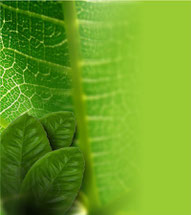
Topic III: Macromorphological characteristics of vegetative organs
Fruit
What is the fruit?
In flowering plants, the fruit is the group formed by the ripened ovary and all other parts of the flower inseparable from it.
In botanical sense, the fruit is called only the ripened ovary.
In common parlance, the word is often used to describe only succulent and edible fruits of woody plants, bushes and shrubs, like tomato or mango, and some smaller ones, like strawberry or lemon.
In natural conditions, the fruit is usually formed after fertilization of the ovule, but in many plants, mostly cultivated varieties, such as seedless citrus, grapes, bananas and cucumber, the fruit ripe without fertilization, a phenomenon called parthenocarpy.
In any case, ovarian maturation causes wilting of the stigmas and anthers and enlargement of the ovary (or ovaries, if the flower has more than one).
The inside ovules from the fertilized ovaries develop and form seeds.
At maturity, the ovary walls develop and form the pericarp, consisting of three layers.
- Epicarp: outer layer
- Mesocarp: intermediate layer
- Endocarp: inner layer.
The fruit main function is to protect the seeds during their development; in many plants it also favors seed dispersal.

Types of fruits
The fruit may be dry or fleshy. In fleshy fruits, the pulp is typically the mesocarp, as in mango and grape.
In a single fruit, ovary walls are succulent at the beginning of ripening, but in the nut or dry fruit, almost all moisture is lost while advancing its development, whereas in
the fleshy fruits it enlarges further and retains water.
The legume pod is a nut characteristic of legumes. The pod itself is the pericarp, and its content (beans or peas) are the seeds.
Nutritional principles of fruit
Carbohydrates, including starches and sugars are the dominant nutritional principle.
Citrus fruits, tomatoes and strawberries are primary sources of vitamin C, and almost all fruits contain considerable amounts of vitamin A and vitamin B.
The vitamin content decreases dramatically during storage and transport of fresh fruit, but keeps well in frozen.
The property that many fruits have of forming jams is due to pectin, an important carbohydrate.
In general, the fruit contains little protein and fat, are exceptions avocado, nuts and olives, which contain large amounts of fat, and grains and legumes, rich in protein and
which provide a substantial part of dietary minerals.
Nuts or evaporated fruits contain a much higher proportion of nutrients than fresh ones, because evaporation concentrates them.

 Pharmacognosy´s topics - Medicinal plants
Pharmacognosy´s topics - Medicinal plants


Write a comment